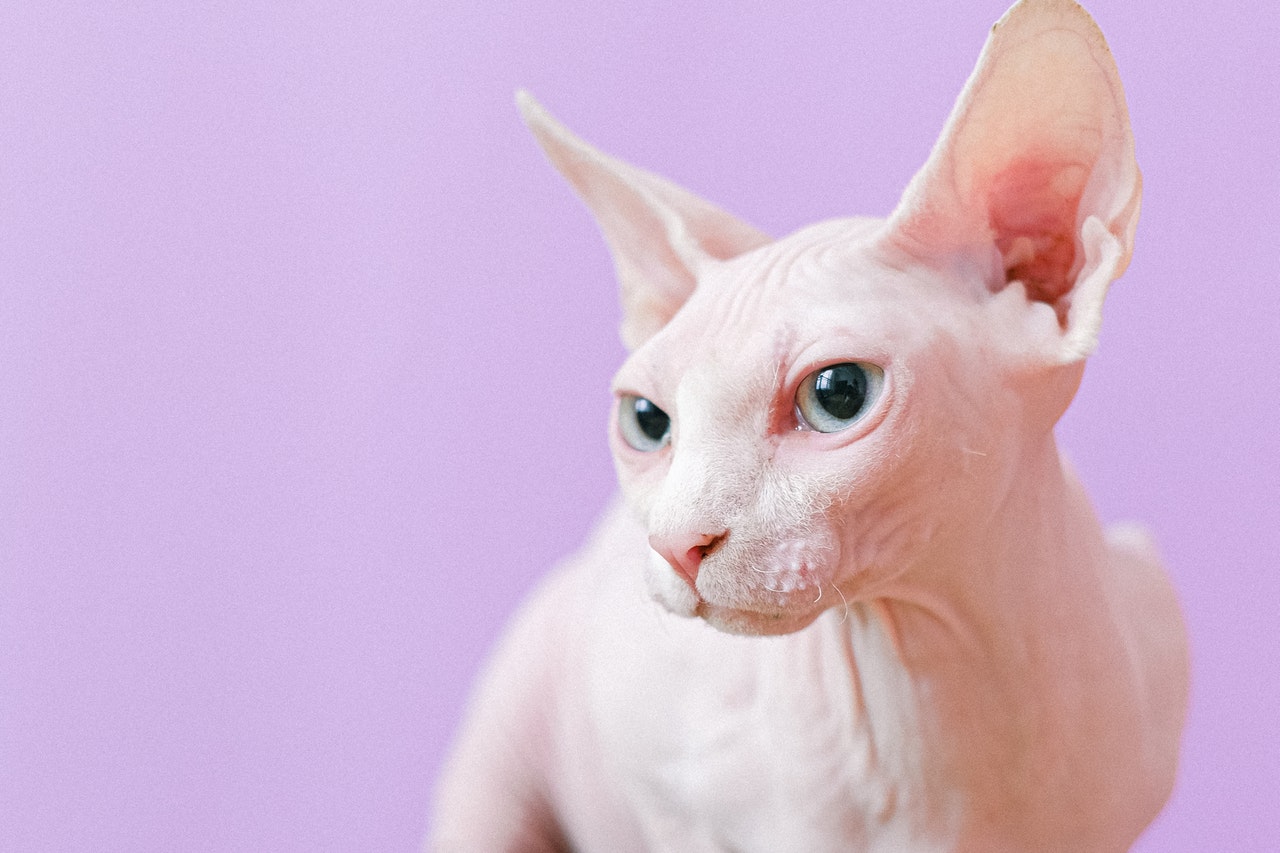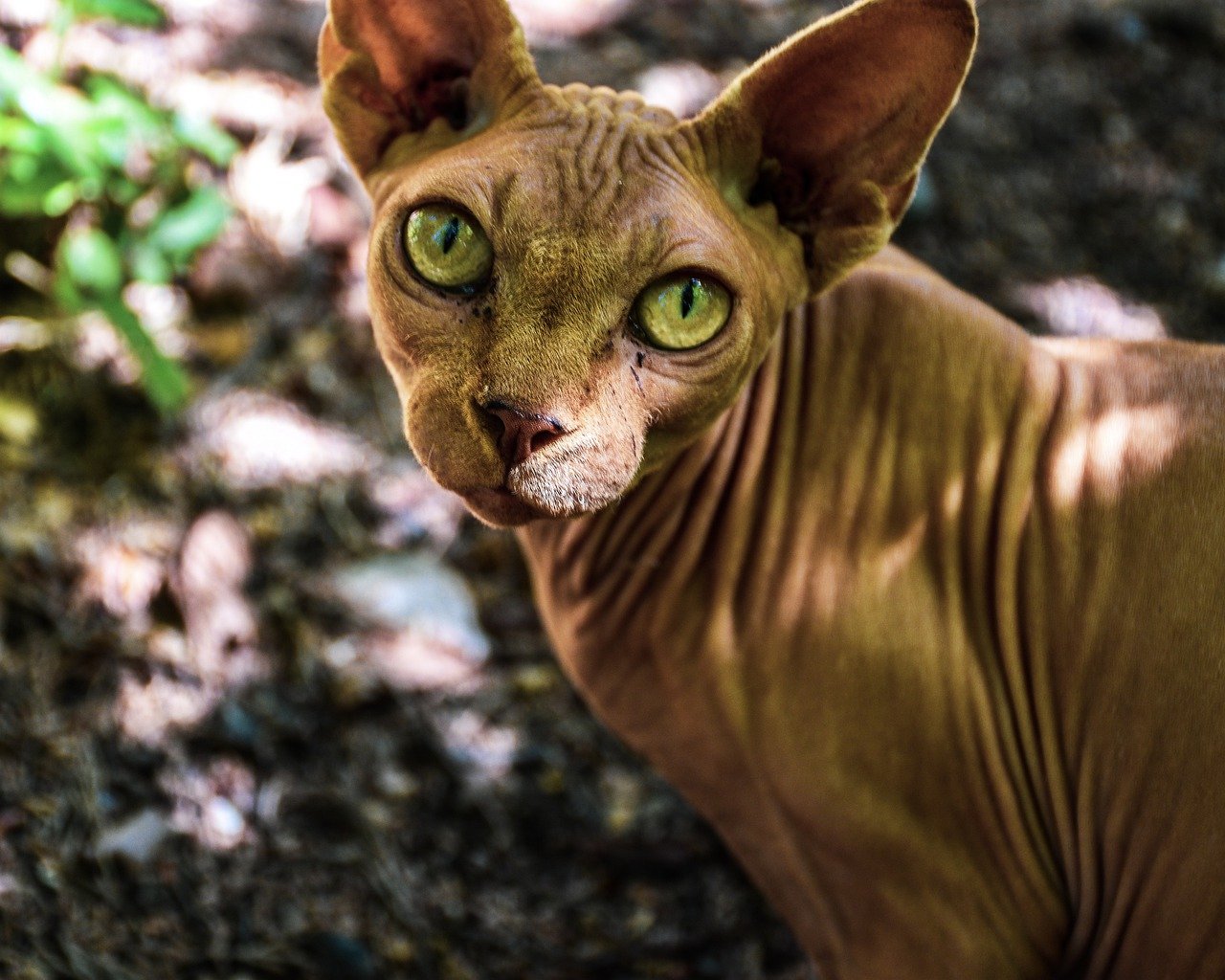Whether you’re considering adopting a sphynx because you’re trying to reduce your allergy symptoms, or you simply love their adorable, wrinkled faces, there are a few things you should know about how to care for a sphynx cat. Despite their nearly hairless bodies — fun fact: they’re not completely hairless — the first thing you’ll learn in Sphynx 101 is that sphynx cats are actually a ton of work.
But don’t let that put you off. Sphynx cats are some of the friendliest, funniest cats around. They’re fiercely loyal to their favorite humans, so much so that their personalities are commonly described as doglike. This breed is curious and loving, making them the perfect fit for those who don’t mind having a constant companion. If you have children or other pets, you’re in luck. Sphynx cats typically get along with the entire family, including dogs.

Why do hairless cats require so much upkeep?
You might think a hairless cat is lower maintenance than other breeds, but their absence of body hair actually creates extra work. Because sphynx cats have only a fine layer of peach fuzz on their bodies, their natural oils accumulate on the surface of the skin. With other breeds, their hair absorbs the oils, creating glossy, healthy coats. Your sphynx, on the other hand, will need a bath once a week to shed the oils.
Not only does a thick coat absorb oil, but it’s also essential in helping cats regulate their temperature. This means that, in addition to requiring weekly bath time, your sphynx needs help maintaining his body temperature. (Sphynx cats are notoriously cuddly in part because they’re trying to steal our body heat.) However, given their high metabolisms, sphynx cats can also overheat easily.
Keeping your sphynx cat clean
Cleanliness is a top priority with a sphynx. We recommend using fragrance-free, hypoallergenic cat shampoo when bathing your sphynx, as it’s much less likely to irritate his sensitive skin. Be sure to rinse your cat thoroughly to avoid leaving behind any residue, which can lead to itching and irritation. Because sphynx cats get cold easily, you should pat them dry as soon as bath time is over — rubbing is too harsh on delicate skin.
Did you know cats can develop acne? Pore-clogging oil can cause blackheads on your feline friend. If you notice that your sphynx has developed acne, you can treat it with gentle anti-bacterial soap. (Ask your vet for recommendations or an office visit if you’re stumped.)
Sphynx cats are also prone to waxy buildup in their ears because there’s not much hair present to help keep them clean, so you’ll also want to clean your kitty’s ears during bath time. But don’t worry; cleaning your cat’s ears isn’t a complicated process. A few swipes of a cotton ball soaked in specially formulated ear cleaner is all it takes to wipe away wax and dirt.

Protecting your sphynx cat
We often see cats contort themselves into funny positions to scratch an itch. Adorable, yes, but potentially risky for a sphynx. Because they don’t have a thick layer of hair, sphynx cats can easily scratch themselves too hard and leave an open wound. Just like our injuries, any open sore on your kitty can become infected.
To prevent claw-related mishaps, we recommend keeping your sphynx’s nails trimmed or putting on nail caps, thin layers of nontoxic plastic that prevent scratches. (Some vets may be willing to put them on for you; it never hurts to ask.)

Helping your sphynx stay comfortable
As we briefly touched on earlier, this good-natured, mostly hairless breed needs help with temperature regulation. But wait just one second before you buy your sphynx an entire wardrobe of adorable sweaters. While some cats love wearing clothes, others turn into miniature, bald Tasmanian devils if you so much as attempt to clothe them.
If your cat tolerates clothing, be sure to look for soft fabrics that won’t irritate his skin. We recommend keeping your sphynx indoors, but if you plan on letting him venture out into your yard, opt for clothing with sun protection to prevent uncomfortable sunburns. Lightweight fabrics help your kitty stay cool while providing SPF, but be prepared to wash his clothes frequently to remove oily buildup.
Some cats hate wearing clothes with the flaming passion of 1,000 suns, but that doesn’t mean they can’t warm up when the temperature starts to dip. Heated cat beds make the perfect cozy spot for sphynx cats, and if you’re concerned your cat might get too warm, models with thermostats provide warmth without the risk of your cat overheating or getting burned.
If it’s an option, you can also keep one part of your home warmer. And for those sweltering summer months, fans and cooling pads help keep your cat from overheating. Just make sure you have cozy blankets on hand in case he gets a little too cool.
Despite the extensive upkeep required, we think hairless cats are worth the effort. Sphynx cats are playful, affectionate, and loyal companions. If you’re willing to do the work, you’ll be hard-pressed to find a more loving, cuddly cat than a sphynx.



